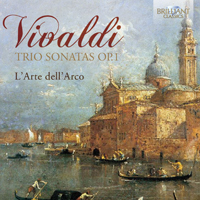| No. 260 of the ongoing ITYWLTMT series of audio montages can be found in our archives at https://archive.org/details/pcast260 |
=====================================================================
This week’s
Blog and podcast considers a pair of works by Dimitri Shostakovich
featuring fellow-Russian artist Mstislav Rostropovich – in one instance as
cello soloist and in the other as conductor.
Mstislav
Rostropovich is internationally acclaimed and acknowledged as one of the
world's greatest cellists of his generation. His repertoire includes more than
50 concertos, ranging from the baroque, through the classical and romantic
periods, to the avant-garde. As a cellist, Rostropovich is noted for his
commanding technique and intense, visionary playing.
Rostropovich
was one of the world's most outspoken defenders of human and artistic freedoms.
In 1974, after a period of four years during which the writer Solzhenitsyn
resided in their home, Rostropovich and his wife, soprano Galina Vishnevskaya
left the Soviet Union at their own request.
Rostropovich
has also won outstanding acclaim as a conductor, appearing with most of the
world's leading orchestras, including his long tenure as Music Director of the
National Symphony Orchestra of Washington. Both on the cello and on the podium,
Rostropovich is considered one of the leading interpreters of the music of
Shostakovich (with whom he studied composition), Britten, and Prokofiev.
Opening the
montage is the first western performance of Shostakovich’s Cello Concerto No.
2, composed in the spring of 1966 in the Crimea. It was written for Mstislav
Rostropovich, who gave the premiere in Moscow at the composer's 60th birthday
concert. On the montage, Coplin Davis conducts the BBC Symphony in a live
broadcast..
In an
interview by Tim
Janof, Rostropovich talks about Shostakovich and Prokofiev:
Shostakovich was very shy and sensitive and he had a rich inner life that he kept to himself. He avoided confrontation and would fib to spare somebody's feelings. I remember him going up to somebody after a concert and praising their performance and predicting a great future career even though the performance was actually pretty bad. He generally kept his true thoughts and feelings to himself, though he did tend to open up a bit at parties.
While Prokofiev did a lot of his composing at the piano, Shostakovich worked out a lot of ideas in his head. [,,,] I took many walks with Shostakovich during which he would suddenly raise his head and become very quiet, which I understood to mean that he was composing. […] Shostakovich liked the combination of cello and celeste in Prokofiev's Sinfonia Concertante [for cello and orchestra, a work dedicated to and premiered by Rostropovich], so that instrumentation appeared in Shostakovich's next work.
Today’s
montage features Shostakovich’s Fifth symphony, which Rostropovich brings up in
anecdote:
Prokofiev […] didn't seem to have an unexpressed thought. If he didn't like something, he never considered another person's feelings before he shared his opinion. As an example, Prokofiev once asked Shostakovich why he used so much tremolo in his Fifth Symphony, telling him that it sounded like Aida, which I gather was a bad thing. He could be quite acidic.
After the
symphony had been performed in Moscow, Heinrich Neuhaus called the work
"deep, meaningful, gripping music, classical in the integrity of its
conception, perfect in form and the mastery of orchestral writing—music
striking for its novelty and originality, but at the same time somehow
hauntingly familiar, so truly and sincerely does it recount human
feelings."
I think you will love this music too.





:format(jpeg):mode_rgb():quality(90)/discogs-images/R-4295176-1405792165-5458.jpeg.jpg)
:format(jpeg):mode_rgb():quality(90)/discogs-images/R-2516958-1398971475-5440.jpeg.jpg)